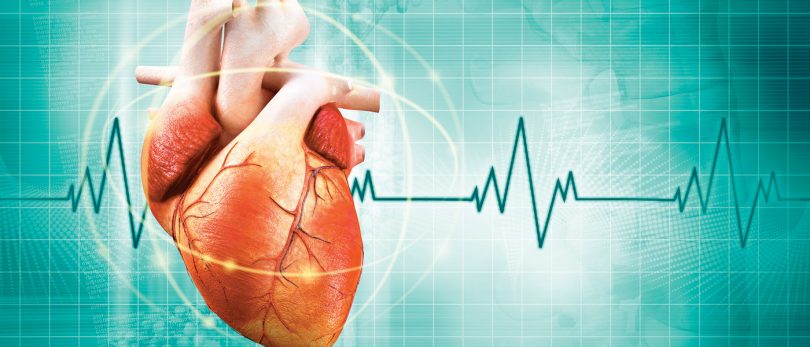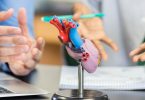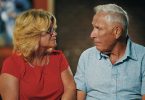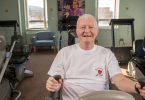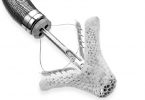Heart failure occurs when the heart can’t pump enough blood to meet the body’s demands. This can be chronic, meaning it happens slowly over time. Or it can be acute, happening all of a sudden. For doctors at UHS, the scene is familiar: A patient arrives in the Emergency Department in acute heart failure. Within moments, physicians begin the work of determining what treatment will give the patient the best hope for recovery.
How ECMO Works
(Click to enlarge picture.)
When a patient is experiencing a life-threatening condition such as heart failure or pulmonary failure, extracorporeal membrane oxygenation, or ECMO, can be used to keep their blood oxygenated and allow their heart and lungs to rest. The ECMO machine pumps blood outside the patient’s body into a membrane that acts as an artificial lung and oxygenates the blood before sending it back into the patient’s body. Two types of ECMO are used, depending on the needs of the patient:
Veno-arterial (VA) ECMO This is for patients with heart failure. In VA ECMO, the deoxygenated blood is pumped out of the patient’s body and passed through a membrane that inserts oxygen. The blood is then heated slightly and sent through a pump that takes over the function of circulating the blood throughout the patient’s body.
Veno-venous (VV) ECMO This is for patients with pulmonary failure whose hearts are working well. VV ECMO adds oxygen to the patient’s blood, but doesn’t require the pump to assist circulation.
In some cases, this means treatments, such as angioplasty, stenting, surgery or valve repair, which would be too much for a patient who is suffering from heart failure or another critical medical issue. In these situations, doctors at UHS can now turn to extracorporeal membrane oxygenation, or ECMO, a method of life support that keeps the patient’s blood and organs oxygenated until the patient is stable enough for the treatment that will repair the problem.
According to Ahmed Khan, DO, cardiothoracic surgeon at the UHS Heart & Vascular Institute, ECMO is an essential “bridge to therapy, not a treatment in itself.” Dr. Khan explains: “Imagine a 50- to 60-year-old patient who has had a severe heart attack. In addition, his lungs and kidneys are failing. Using ECMO allows us to keep oxygen moving to the kidneys, lungs and other organs, buying time to repair the heart so all of the systems survive.”
Without using ECMO, says Dr. Khan, there is a likelihood that even if the heart could be repaired quickly, failure of the lungs or kidneys could prove fatal.
Heart failure is a common reason to use ECMO, but it is not the only one. Dr. Khan has also used ECMO for lung support in patients who have pulmonary failure due to an H1N1 flu infection, for example.
UHS is putting teams and processes in place to have dedicated surgical and nursing staff available for patients who need ECMO life support. Dr. Khan says that this is a huge benefit to the population in the UHS service area. “We have an elderly population with a lot of advanced cardiac disease. Because many people live two to three hours away from any other major medical center, we at UHS can provide ECMO care for patients who would have otherwise died,” says Dr. Khan.

